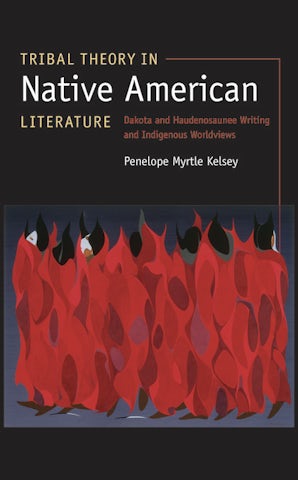"Well positioned within current scholarship on Native American literatures, this study offers a much-needed view of how, and why, Native American literary studies need to progress."—C. L. Sheffield, CHOICE
"Kelsey's analyses are insightful and intelligent, and her familiarity with Dakota language and culture provides a significant and very helpful grounding for her readings of the texts."—Lucy Maddox, Studies in American Indian Literatures
“Well-written and exceptionally thoughtful, Penelope Kelsey’s theoretical framework does for Dakota literature what still needs to be done for most Native American literatures. This book is essential reading for anyone interested in Cultural or Native American Studies. Although intelligent and well-researched, it never sinks into jargon or convolution; rather it speaks about specific Dakota literature and speaks about it well.”—W. S. Penn, author of Killing Time with Strangers and All My Sins Are Relatives
“How can we argue against Indigenous erasure and invisibility when we accept our colonization by our behavior? Be thankful Kelsey’s Tribal Theory in Native American Literature asks us to take up the challenge and task on behalf of Indigenous land, culture, and community!”—Simon J. Ortiz, author of Out There Somewhere and Woven Stone
“Tribal Theory is a necessary work, which etches out a roadmap to a literary critical practice, independent of Eurocentric landmarks. Here, as in the tradition of the Dakota, Kelsey serves as “culture bearer” in the face of academic assimilation. The work is a significant gesture within the grand movement toward intellectual sovereignty upon which the survival of our pueblos depends.”—Cherríe L. Moraga, author of Loving in the Wars and The Last Generation
"In Tribal Theory in Native American Literature Penelope Kelsey takes a significant new step in the criticism of Native American writing. Focusing on writers in the Dakota tradition such as Zitkala-Ša and Charles Eastman, Professor Kelsey shows with verve and skill, and a keen sense of continuity and change, the importance of mastering specific tribal systems of knowledge in interpretation of the works of native writers. Her particular readings are original and rich with brilliant new revelations of literary uses of cultural tradition."—Alan Trachtenberg, emeritus professor of American studies, Yale University, and author of Shades of Hiawatha: Staging Indians, Making Americans in the Early 20th Century
